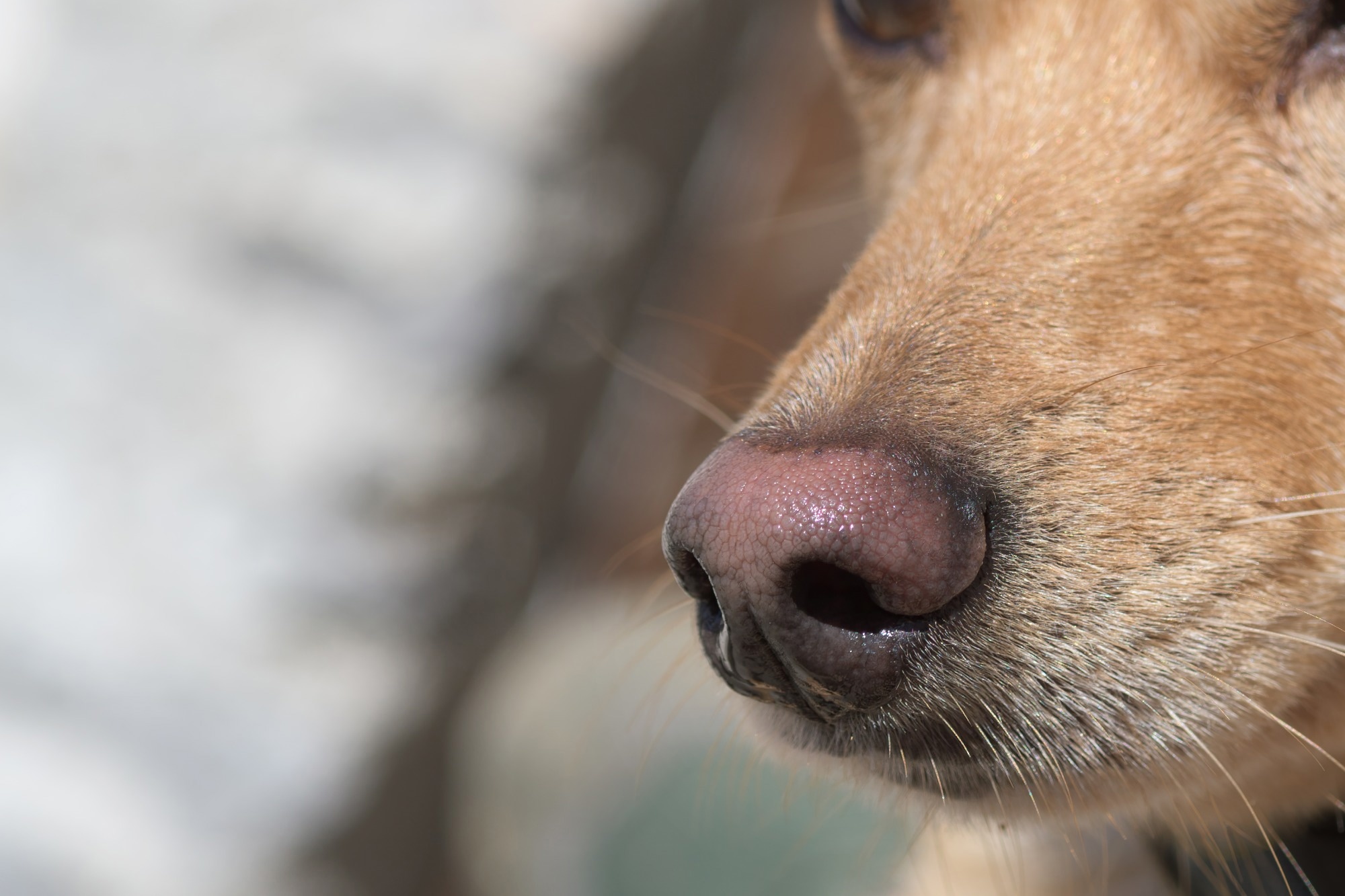Home » Health News »
Scent-trained dogs as a strategy for rapid, low-cost, and environmentally friendly COVID-19 screening
In a recent study published in the JAMA Pediatrics Journal, researchers reported on a dog screening program to complement a school-based severe acute respiratory syndrome coronavirus 2 (SARS-CoV-2) rapid antigen testing program. Scent-trained dogs are a strategy for rapid, non-invasive, low-cost COVID-19 testing.
 Study: Lessons Learned From a COVID-19 Dog Screening Pilot in California K-12 Schools. Image Credit: obertAvgustin/Shutterstock.com
Study: Lessons Learned From a COVID-19 Dog Screening Pilot in California K-12 Schools. Image Credit: obertAvgustin/Shutterstock.com
Background
The Public Health Department of California funds a state-level, school-based rapid antigen testing program for SARS-CoV-2 detection. Despite being effective, the program requires healthcare personnel, resources for coronavirus disease 2019 (COVID-19) testing, and the collection of samples. Moreover, the programs result in medical waste generation.
Dogs trained to recognize scents provide a non-invasive, rapid, cost-effective, and environmentally sustainable approach to screening for SARS-CoV-2. Previous studies have reported on the capability of dogs to detect COVID-19-associated volatile organic compounds (VOCs) in specimens obtained from individuals infected or uninfected with SARS-CoV-2.
About the study
In the present study, researchers reported on SARS-CoV-2 detection by dogs as an initial screening approach before performing SARS-CoV-2 rapid antigen tests.
The team partnered with the Early Alert Canines Organization to train two medical alert dogs to detect VOCs released from SARS-CoV-2-positive individuals. In-person COVID-19 screening using dogs was performed in several schools, which provided elementary-, middle- and high-level education, on the days of the scheduled SARS-CoV-2 rapid antigen tests.
Individuals stood six feet apart, and their handlers led the medical alert dogs to sniff the ankles and feet of the study participants. The individuals did not face the dogs to maintain confidentiality. The dogs sat down to indicate an individual as probably SARS-CoV-2-positive.
All participants subsequently underwent SARS-CoV-2 rapid antigen testing for a comparative assessment of the specificity and sensitivity of SARS-CoV-2 detection by dogs.
The results of dog screening and rapid antigen testing were recorded on the primary health digital platform. If the dogs signaled SARS-CoV-2-positive but the rapid antigen test reports were SARS-CoV-2-negative, the dog screening-rapid antigen test pair signal was considered false positive.
Likewise, if the dogs did not provide any signal but the rapid antigen testing reports were SARS-CoV-2-positive, the pairing signal was regarded as a false negative.
Demographic data were obtained on participant age (five to 10 years, 11 to 14 years, 15 to 18 years, 19 to 49 years, 50 to 64 years, and ≥65 years); sex (male, female, nonbinary, transgender male); and race or ethnicity (American Indians or Alaskan natives, Asians, Blacks, Whites, Hispanics, multiracial non-Hispanics, Native Hawaiians, and other types of Pacific Islanders).
In addition, data were obtained on the type of schools (public or private) and the number of dog-performed screenings (one, two, three, and four or more).
Results and discussion
Following two months of dog training on scents emitted from SARS-CoV-2-positive laboratory specimens, the dogs attained >95.0% specificity and sensitivity for SARS-CoV-2 detection. Subsequently, on-field COVID-19 screening by dogs was performed across 27.0 schools in 50.0 visits between April 1 and May 25 2022.
Among 1,558 participants, the median age was 13.0 years; 56% (n=870) were female, 43% (n=670) were male, and 1.20% (n=18) were of nonbinary, undisclosed, or transgender sexes.
The sample population largely comprised students (89%), and 68% of the study participants were screened ≥2.0 times. Among students (n=1,383), 450 (33%), 565 (41%), 53 (4.0%), and 315 (23%) were screened by dogs one time, two times, three times, and four or more times, respectively.
For staff members (n=145), the corresponding numbers (percentages) were 55 (38%), 64 (44%), 11 (8.0%), and 15 (10%), respectively. Among community members (n=30), 18 individuals (60%) and 12 individuals (40%) were screened by dogs once and twice, respectively. In total, 3,897 paired rapid antigen test-dog screenings for SARS-CoV-2 were performed.
The animals accurately signaled 85 COVID-19 cases and eliminated 3,411 SARS-CoV-2 infections, yielding a diagnostic accuracy of 90.0%. However, the animals inaccurately signaled SARS-CoV-2 presence in 383.0 instances and could not detect SARS-CoV-2 in 18.0 cases, providing specificity and sensitivity of 90.0% and 83.0%, respectively.
The results of COVID-19 screening using dogs directly on individuals could be impacted by distractions (including noises and pediatric individuals) and environmental variables such as wind and smells present in the surroundings, apart from those emitted by individuals infected with SARS-CoV-2.
Conclusions
Overall, the study findings showed that after scent training using laboratory specimens, and field testing, the medical alert dogs accurately detected SARS-CoV-2 presence in the majority of instances.
Contrasting to the approaches used in previous studies that used specimens, the dogs performed on-field COVID-19 screening to enable more cost-effective and swifter screening.
The approach improved SARS-CoV-2 testing efficiency; however, a modest specificity and sensitivity reduction was observed compared to the laboratory testing results.
Performing extensive VOC-based screening using dogs followed by SARS-CoV-2 rapid antigen testing only for individuals who are signaled as SARS-CoV-2-positive by the dogs could reduce rapid antigen test requirements by nearly 85.0%, and therefore, reduce the burden of COVID-19 on health resources. The study findings underpin using dogs to non-invasively and efficiently screen for SARS-CoV-2.
-
Glaser, C. et al. (2023) "Lessons Learned From a COVID-19 Dog Screening Pilot in California K-12 Schools", JAMA Pediatrics. doi: 10.1001/jamapediatrics.2023.0489. https://jamanetwork.com/journals/jamapediatrics/fullarticle/2804205
Posted in: Medical Science News | Medical Research News | Disease/Infection News | Healthcare News
Tags: Antigen, Coronavirus, Coronavirus Disease COVID-19, covid-19, Diagnostic, Education, Healthcare, Laboratory, Pediatrics, Public Health, Respiratory, SARS, SARS-CoV-2, Severe Acute Respiratory, Severe Acute Respiratory Syndrome, students, Syndrome

Written by
Pooja Toshniwal Paharia
Dr. based clinical-radiological diagnosis and management of oral lesions and conditions and associated maxillofacial disorders.
Source: Read Full Article



